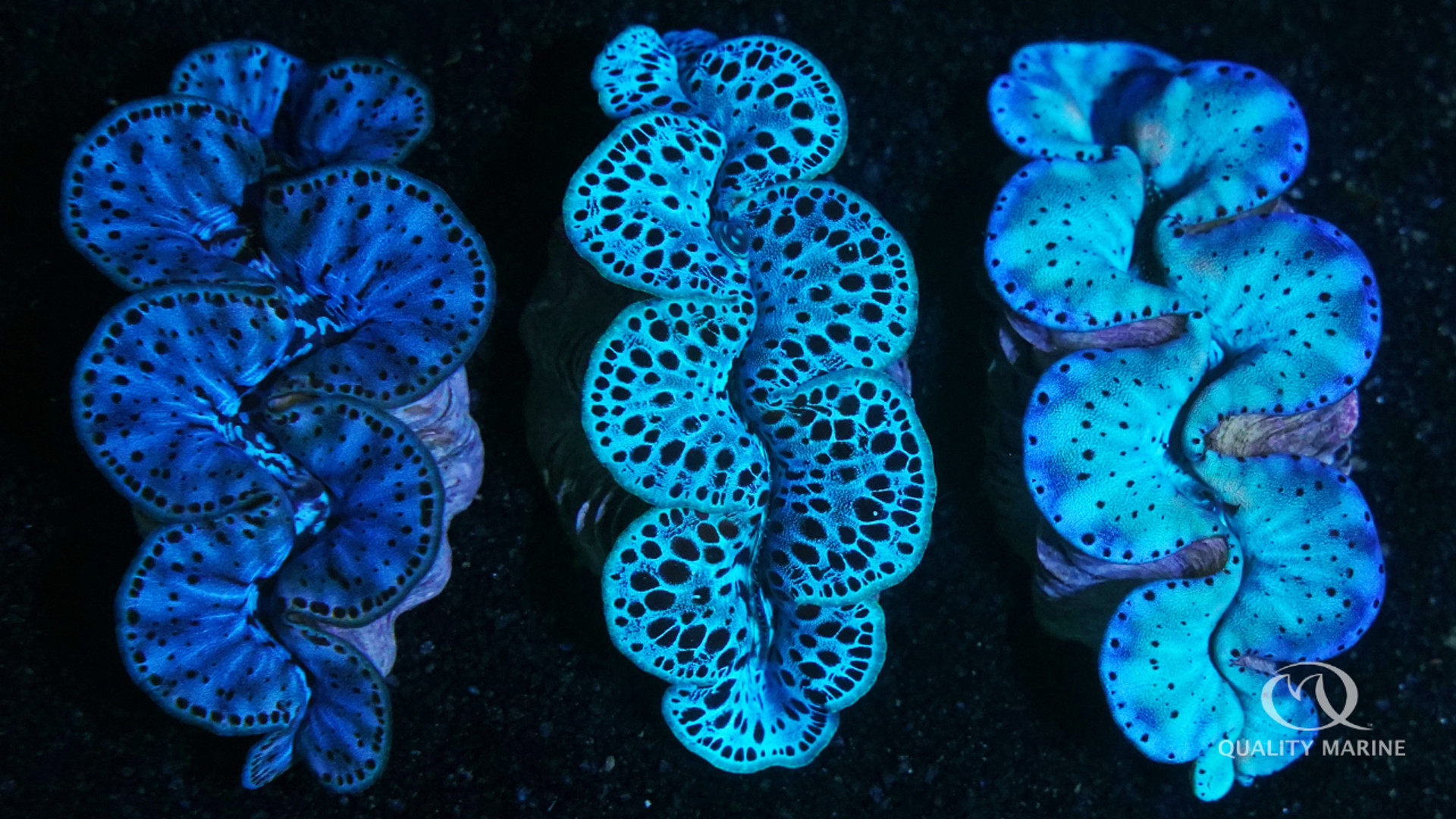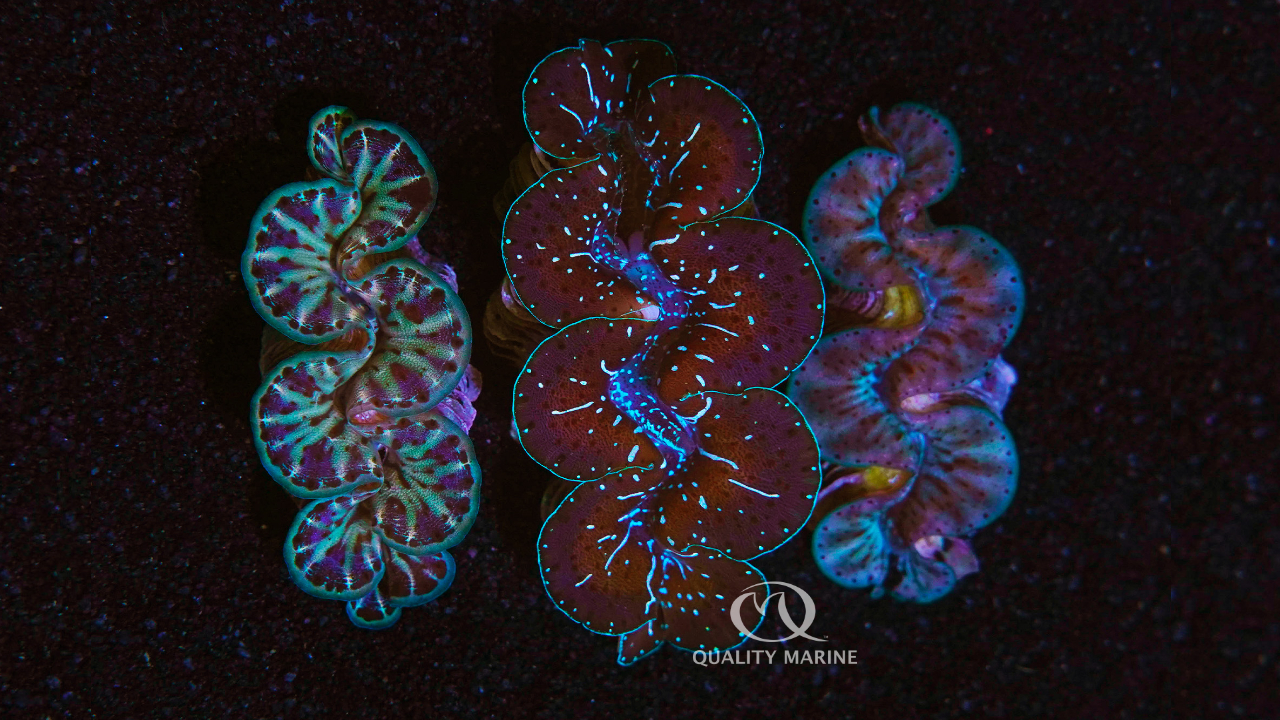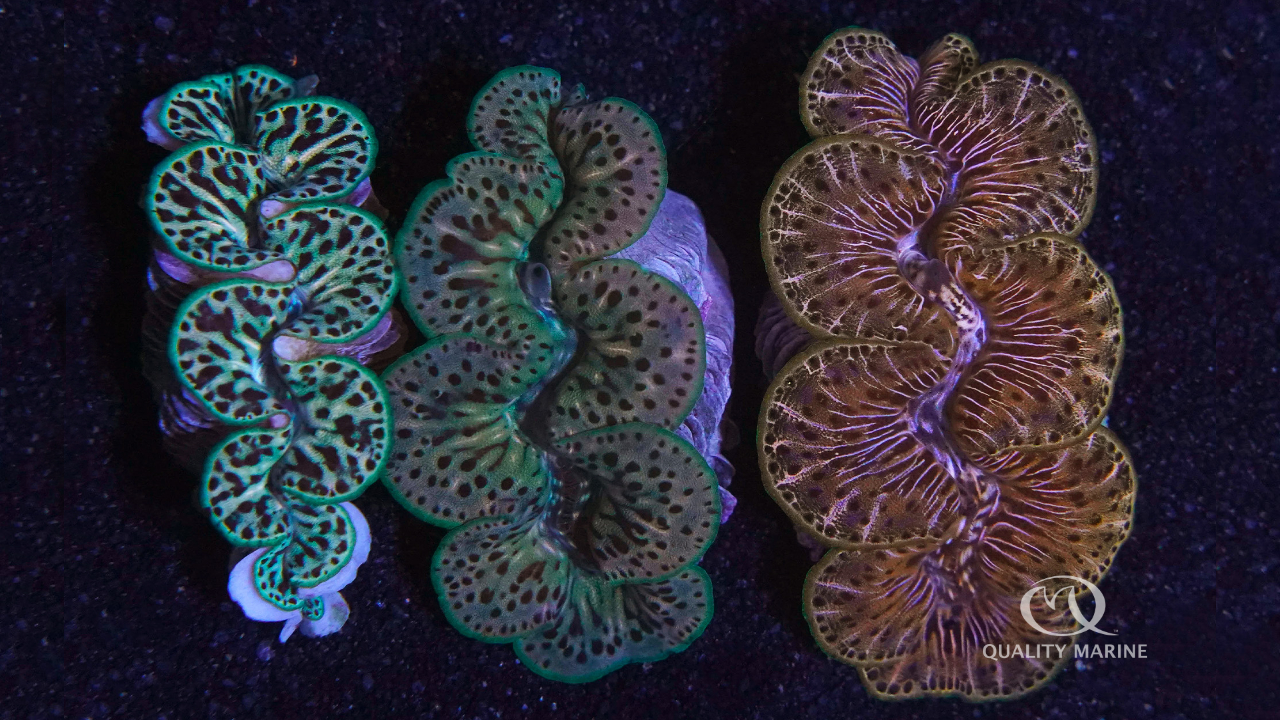Maximum Maxima

For the vast majority of reef aquarists, it is Tridacna maxima (what we more commonly call Maxima Clams) that come to mind whenever clams are brought up. These gorgeous clams are popular all around the world, both as a stunning jewel in one's aquarium and in many places, as a delicacy! In the aquarium, they are few rivals for their beauty and having a healthy, happy Maxima Clams starts with where you get them.
Here at Quality Marine, nearly all the Maxima Clams we sell are maricultured. For a few decades now, only the best genetics have been selected at for growing out at QM exclusive facilities and as such, we have been offering the best, and most beautiful clams to our retail partner stores for more than 20 years! These partnerships also allow us to tightly track and control the conditions these invertebrates are packaged and shipped in, resulting in the most beautiful clams, in the best possible health and condition for our retail partners and the aquarists who shop there.
From there, it is up to you, the hobbyist to keep them happy, and we're here to help. We have been involved in clam culture now as long as anyone in ornamental aquatics, both in aquaculture and in mariculture. In our experience, even the most beautiful clams can get prettier given the correct care.
The size of the aquarium you keep the clam in doesn't matter as much as the stability of it, combined with the light and food you provide. While bigger aquariums will be more stable by nature, space wise, you won't need much more than 20 gallons of aquarium space to keep a maxima clam. There are many catch points to attempting to keep a clam in this much water, and so while the extra space isn't necessary, the benefits from a stability standpoint will make clam maintenance so much easier that we recommend keeping them in a minimum of 40 gallons. You'll want a substrate that the clam can nestle down into, and they aren't that picky as to grain size. Flow should be very turbulent, but gentle and non-laminar. All clams are quickly and often irreversibly damaged by powerheads pointed directly at them.
The water parameters that Maxima clams do best in will be familiar to any of you who keep other invertebrates. Clams aren't actually that hard to keep, if you give them everything they want, and you source good clams to start with. First and foremost, keep everything extraordinarily stable; we suggest you have your aquarium at least six months before you get a clam. You should have at least a couple months of testing showing that your pH, temp, salinity nitrogen levels have all been appropriate and not moving much at all. Aim for pH of at least 8 and not more than 8.3. Specific gravity should be on the high end of invertebrate levels, 1.025 – 1.026. Nitrates and phosphates should be barely measurable and at a ratio of around 16:1 (nit:phos). Clams are less picky about temperature, though the temperature you choose should not fluctuate. We've seen them kept successfully at temperatures as low as 65 degrees Fahrenheit, and as warm as 80 degrees Fahrenheit; the high end of this range is stressful and we don't recommend it, aim for a tank temperature in the mid 70s.

There used to be some debate as to whether or not clams needed feeding. This is mostly because we are keeping them under very intense lighting, and we still suggest keeping them under very intense, broad-spectrum lighting. All this being said, they still need feeding (even under direct sunlight). Even though a large proportion of a Maxima's nutrition needs is supplied by their symbiotic zooxanthellae, they are still filter feeders. They will do best in aquariums where there are fish (as long as these fish aren't clam pickers). Fish produce both ammonia and particulate waste, and both of these waste streams are utilized by Maxima Clams. Even if you have very dense populations of fish, we still suggest target feeding your clams, and the absolute best way to do this is with Nutramar's live phytoplankton, in particular the CRIT and IC products which offer an excellent nutritional profile for bivalves.
It comes as a surprise to many that Maxima Clams have very intense calcium and alkalinity demands, as even fairly small Tridacna maxima will impact your ca/alk levels much faster than similarly sized corals. If you have more than a couple small (under three inch) Maximas, they are going to need supplementation above and beyond what regular water changes can offer. There are several ways to manage this, and in our opinion, the easiest, most effective is probably bigger and more frequent water changes. If this just isn't feasible the next easiest way to maintain adequate CA/Alk is likely 2-part supplements, though kalkwasser and calcium reactors are also options. Obviously, a detailed testing regimen will be required regardless of the dosing methodology you choose a deeper dive on maintaining elevated calcium levels is a whole other article series that is in the works here right now.
Is your clam happy? We've written an article on this topic exactly, but in reference to Tridacna maxima in particular, you want a clam that doesn't migrate around the tank, stays open, and extends its mantle well. Maximas should be well attached, and you shouldn't attempt to move them once they are, as their “feet” are easily damaged. To summarize, only every choose maxima clams that have come from Quality Marine. Handle clams carefully (if at all), pay careful attention to water chemistry and its stability (especially calcium and alkalinity) and make sure it gets enough light and food and you should be able to watch that gorgeous animal grow for years and years.
